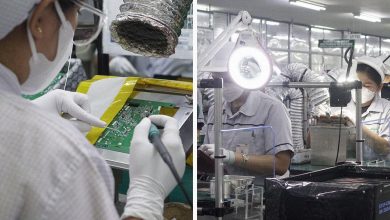MANILA – The FMCG sector in the Philippines remains stable even as consumer FMCG spend in emerging markets has slowed from 8.8 percent in June 2013 to 7.5 percent in June 2014, Kantar Worldpanel research revealed.
In the Philippines, the FMCG sector is stable at -1.8 percent with all megasectors (food, beverage, personal care and household care) barely moving. Food still takes the bulk of Filipinos’ spend, followed by beverages.
The drop in figures in emerging markets is equivalent to USD 8.3 billion of lost growth – demonstrating the effect of a cooling in the global economy. The research also forecasts a further reduction by June 2015 to 7.0 percent.
The drop is largely driven by a slowdown of consumption in Asia where FMCG growth is now at 5.2 percent, down 3.6 percentage points compared with last year – some USD 15 billion. The contraction was felt acutely in China where FMCG growth has fallen by a third in the past two years from 15.8 percent, in the 12 months ending June 2012, to 5.6 percent in the period ending June 2014. Latin America on the other hand, is now growing at 13.0 percent, versus 8.7 percent last year. While in some countries, including Ecuador and Colombia, this is driven by underlying growth in demand, in others it is the result of rising inflation.
Although still performing strongly compared with mature markets in Europe and North America, the reduction in emerging market growth is significant. Jason Yu, General Manager at Kantar Worldpanel China, explained: “Slowing economic growth across many emerging economies has led to shoppers reining in their spending on everyday goods. We now face a new reality where FMCG growth is more moderate. Competition will become fiercer as the size of the prize shrinks. Brands will need to be even smarter when deciding which markets to target and when developing their approach within each country.
“China makes up 69 percent of the emerging Asian market and influences the whole region. Packaged food is the largest element of Chinese consumers’ budgets and sales have been particularly affected by the overall slowdown, growing by just 1.8% compared with 16.0% in the 12 months ending June 2012. China´s FMCG momentum will resurge when growth on packaged food spending recovers,” Yu said.
Opportunities for growth
Despite the slowdown in emerging market growth in general, there are still countries in which FMCG sales are performing strongly. Indonesia is one such example. Although growth in Indonesia remains high at 15.0 percent, it is down by 3.6 percentage points when compared to the 12 months ending June 2013. Consumer confidence in this 250 million population country is high, with GDP forecast by the International Monetary Fund (IMF) to grow by 5.8 percent next year. Brands that have launched new products in Indonesia this year have taken advantage of consumer appetites to try new goods. Shoppers in rural areas in particular now have more disposable income and are being attracted to spend on more consumer products. India has also accelerated its FMCG growth from 3.1 percent to 6.0 percent which is particularly important due to the size of this market.
The top categories and channels
Ecommerce in emerging markets is an increasingly important channel and should be a prime target for brands. It is performing ahead of the market in Taiwan and China while South Korea is the world-leader in FMCG ecommerce with over half of all shoppers buying online. Chinese ecommerce is forecast to account for 3.3 percent of all FMCG sales by 2016 and this trend will continue as investment in technology and infrastructure spreads across the region. Certain categories within the consumer goods market are still posting strong growth. Beverages, for example, are growing the fastest of any product category – 10.0 percent in Asia and 8.0 percent in Latin America. Personal care products are also performing well in both Asia and Latin America as consumers with higher spending power start to buy into these non-discretionary categories.
Despite some efforts to promote online shopping, ecommerce is not yet evident when it comes to FMCG in the Philippines. However, this trend is anticipated to take off in the future as major retailers are starting to set up of the necessary infrastructure for this channel in the country.
Jason Yu concluded: “Growth in emerging markets is still generally quite high but certain areas are slowing. Brands need to understand these changing consumption patterns, tailor their strategies to specific markets and ultimately take advantage of the opportunities that still exist.”










